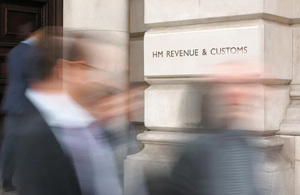Inland Border Facilities update
HMRC provides an update on the Inland Border Facility locations.

Today (Thursday 16 June) HM Revenue and Customs (HMRC) is announcing changes to the planned introduction and life-span of some of its Inland Border Facilities (IBFs).
IBFs were introduced to deal with Border Control Checks post-Brexit, and were constantly under review to make sure they provided value for money.
A new proposed site at Dover was part of this review, and after looking into the amount of cross channel traffic and the necessary associated checks, a decision has been made not to progress with the site. The review showed that the existing facilities have enough capacity to deal with the flow of traffic and therefore a new site was not necessary.
This decision will see a saving of around £120 million – the anticipated cost of developing and running Dover IBF for the intended duration – and allow the funds to be utilised elsewhere.
The decision to not build the Inland Border Facility does not mean that this asset is no longer required by government. Department for Transport (DfT) is now exploring alternative options for its development to ease pressure at the border, given issues with disruption on the strategic road network in Kent and at the ports. DfT will continue to engage with Dover MP Natalie Elphicke, local leaders, businesses, and residents to ensure that any development will also benefit the local community and economy.
Alongside Dover, the decision has also been made to close the Birmingham and North Weald IBF sites ahead of schedule. These IBF sites were introduced on a temporary basis to support customs checks when the UK first left the EU.
Now the sites in Holyhead and Sevington are fully operational and coping well with demand, HMRC no longer needs the support of the interim sites. More information will follow in due course.
Further information
Department for Transport is the owner of the land at Dover White Cliffs and has a strong interest in effective transport in Kent and at the border. DfT bought the asset as a strategic and important site for HM Government to establish functions that would ease pressure at the border, given issues with disruption faced on the strategic road network in Kent and at the portals.